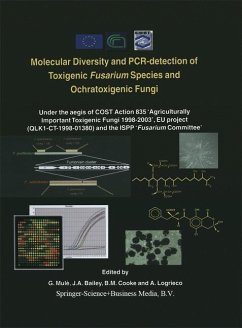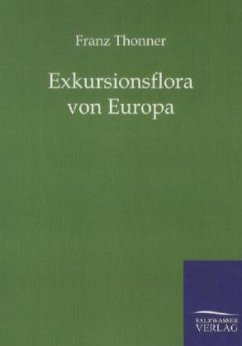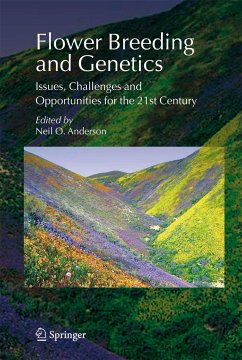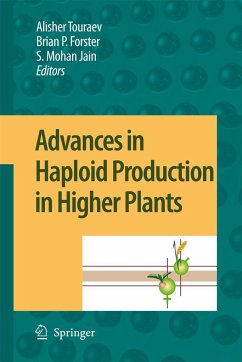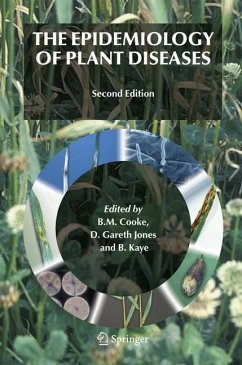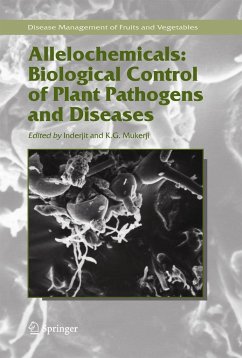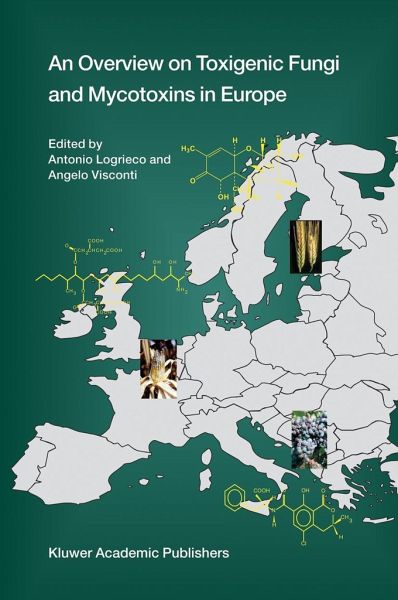
An Overview on Toxigenic Fungi and Mycotoxins in Europe
Versandkostenfrei!
Versandfertig in über 4 Wochen
184,99 €
inkl. MwSt.

PAYBACK Punkte
92 °P sammeln!
The growing interest in health risks associated with toxigenic fungi and related mycotoxins has led to the development of a number of research projects during the past decade in several European countries and a great deal of information has been produced on their natural occurrence in plants, foods and feeds in Europe. The differences in environmental conditions (temperature, light, rainfall etc.) and in exposed cultivated plants (type of cereals, cultivars etc.) in the different European countries have significantly influenced the distribution of specific toxigenic fungi and relative mycotoxicological problems. In addition, transglobal transposition of plant products seems to have significantly contributed to the spreading of toxigenic species and lineages worldwide. Therefore, the migration of agriculturally important toxigenic fungi generated by trade exchanges may represent an important source of inoculum for new plant diseases in Europe and for a wider genetic diversity of local populations.
This volume summarises the contribution that experts from 18 European countries (Austria, Belgium, Cyprus, Croatia, Czech Republic, Finland, France, Germany, Hungary, Italy, Poland, Portugal, Rumania, Russia, Serbia-Montenegro, Spain, Turkey and UK) gave at the closing meeting of COST-835 held in Martina Franca, Italy, on 24-25 October 2003. It provides a detailed overview on the occurrence of toxigenic fungi (Fusarium, Aspergillus, Penicillium etc.) and mycotoxins (trichothecenes, zearalenones, fumonisins, ochratoxins, aflatoxins etc.) in plants, foods and feeds that can serve as a basis for risk management based regulatory decision.
This volume summarises the contribution that experts from 18 European countries (Austria, Belgium, Cyprus, Croatia, Czech Republic, Finland, France, Germany, Hungary, Italy, Poland, Portugal, Rumania, Russia, Serbia-Montenegro, Spain, Turkey and UK) gave at the closing meeting of COST-835 held in Martina Franca, Italy, on 24-25 October 2003. It provides a detailed overview on the occurrence of toxigenic fungi (Fusarium, Aspergillus, Penicillium etc.) and mycotoxins (trichothecenes, zearalenones, fumonisins, ochratoxins, aflatoxins etc.) in plants, foods and feeds that can serve as a basis for risk management based regulatory decision.
The growing interest in health risks associated with toxigenic fungi and related mycotoxins has led to the development of a number of research projects during the past decade in several European countries and a great deal of information has been produced on the natural occurrence of mycotoxins in plants, foods and feeds. The differences in environmental conditions (temperature, light, rainfall etc. ) and in exposed cultivated plants (type of cereals, cultivars etc. ) in the distinct European countries have significantly influenced the distribution of specific toxigenic fungi and related mycotoxicological problems. In addition, biogeographically structured lineages within some important toxigenic fungi have been recently discovered, of reproductive isolation. Transglobal showing a long evolutionary history transposition of plant products seems to have significantly contributed to the spreading of toxigenic species and lineages worldwide. Therefore, the migration of agriculturally important toxigenic fungi generated by trade exchanges may represent a major source of inoculum for new plant diseases in Europe and for a wider genetic diversity of local populations. It was our goal to provide the reader with an update of researches and surveys on the natural occurrence of toxigenic fungi and mycotoxins performed at a European level during the last 5-10 years. The editors are extremely grateful to the EU-COST-835 "Agriculturally important toxigenic fungi" for the financial support that allowed a number of European scientists to meet several times over the past five years to collaborate and exchange information about research advances on toxigenic fungi and mycotoxins.






